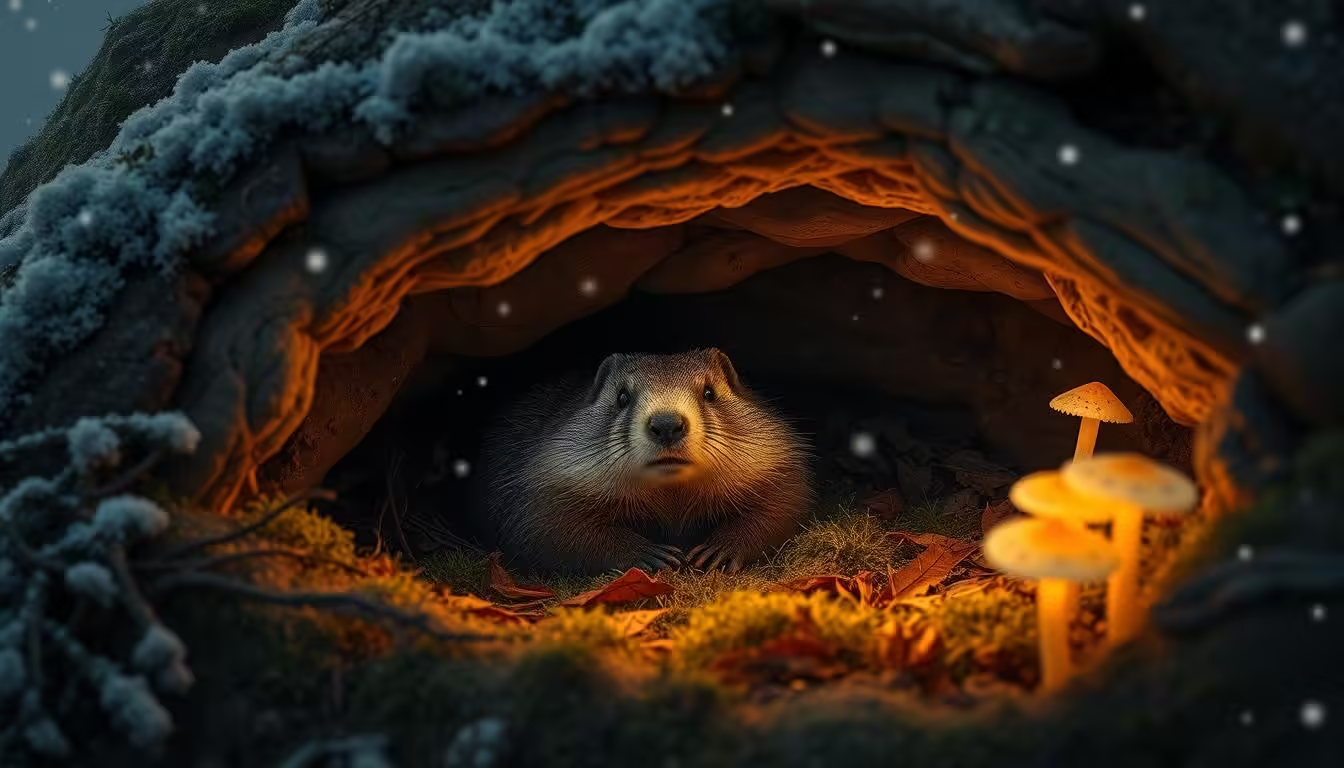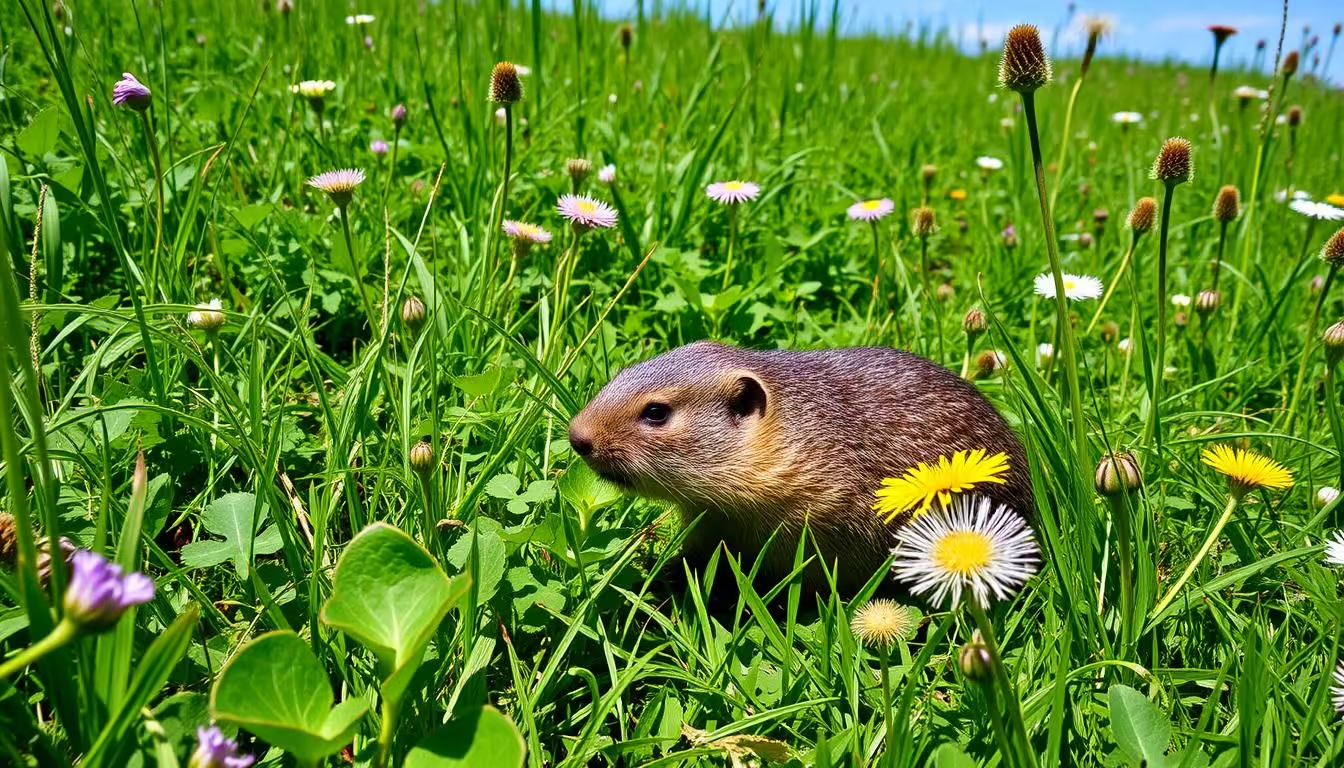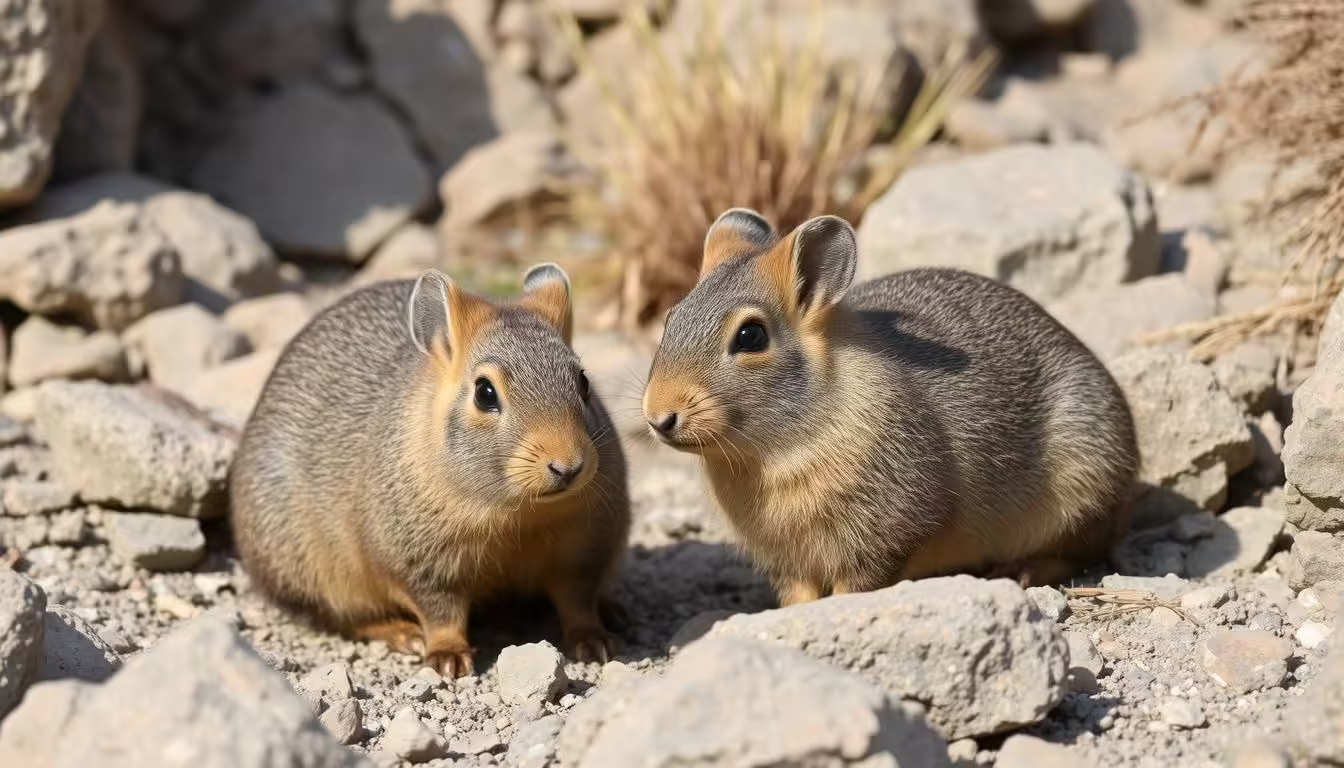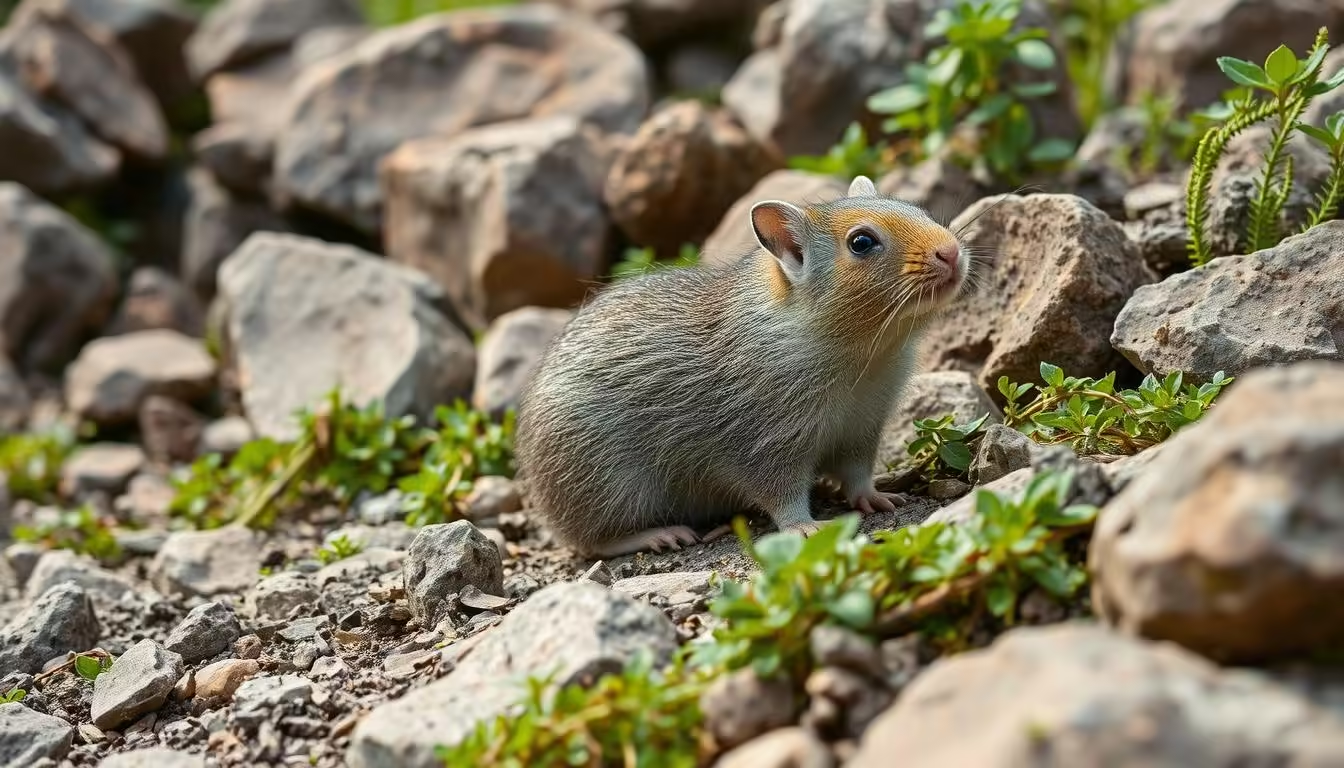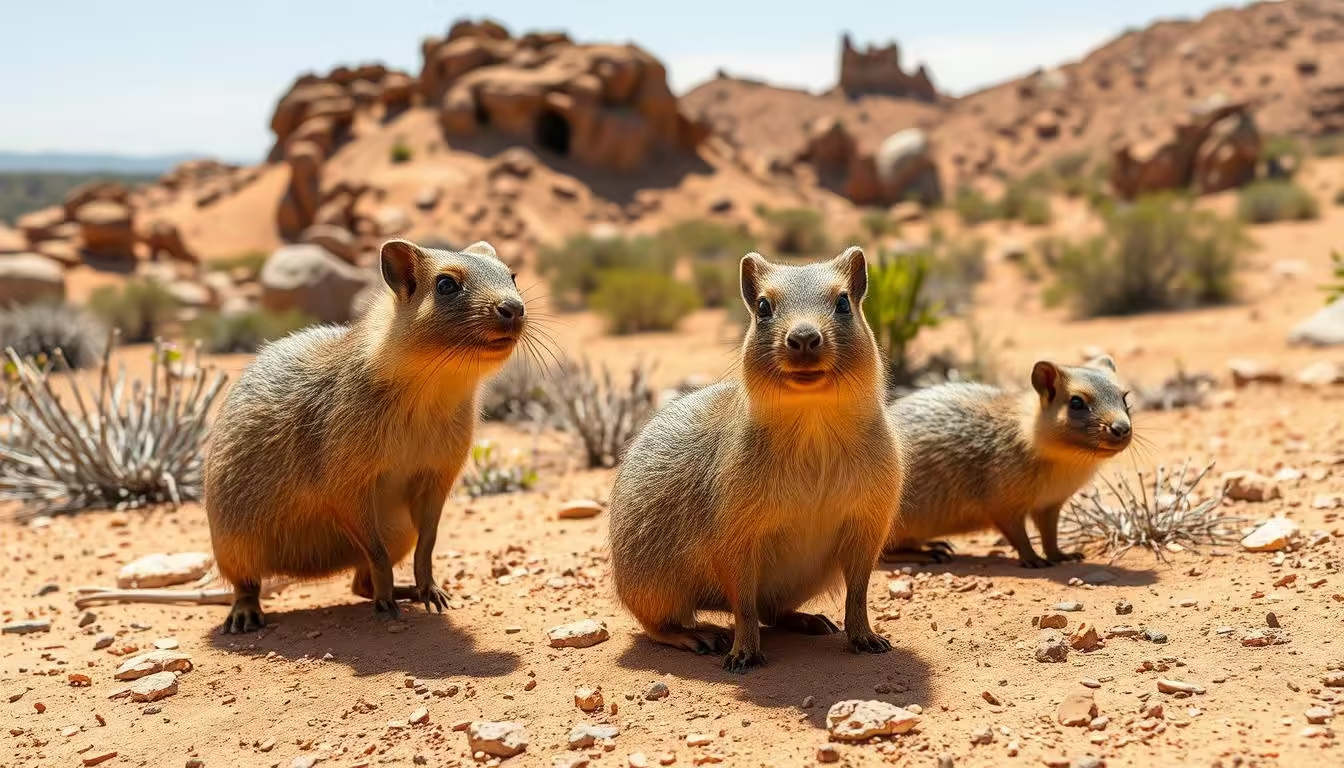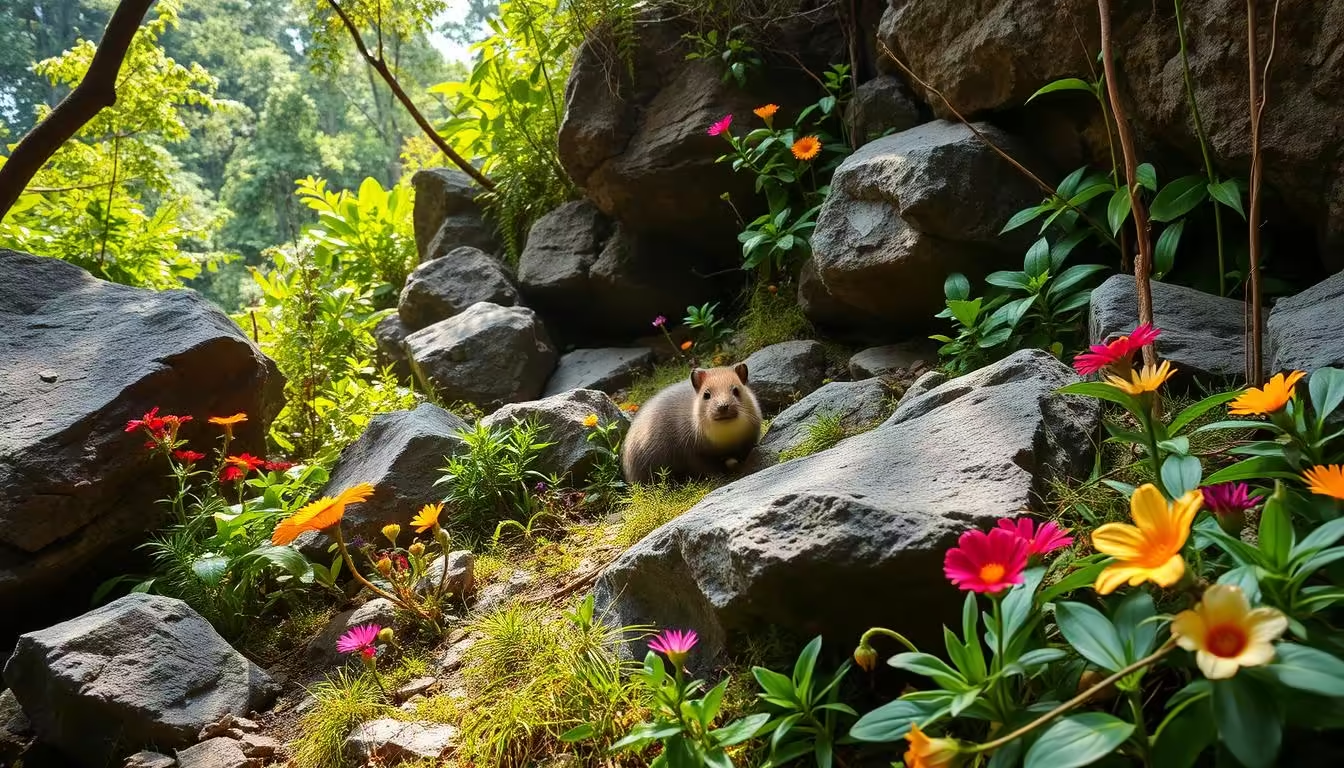Groundhogs, also known as woodchucks or whistle pigs, are true hibernators. They sleep deeply to get through harsh winters. Their body temperature drops from 98°F to as low as 38°F. Their heart rate slows down from 80-100 beats per minute to just 4-5 beats per minute. Groundhogs belong to the squirrel family. They are great […]
Author Archives: Dannella
Groundhogs, also known as woodchucks or whistle pigs, belong to the squirrel family. They can weigh between 4 and 14 pounds. These herbivorous rodents eat a variety of plants, including grass, garden plants, and soybeans. They also enjoy eating peas, carrot tops, alfalfa, broccoli, and clover. Adult groundhogs can eat up to one-third of their […]
Rock cavies are found in South America’s rugged lands. They are fascinating creatures that many wildlife fans love. But, they are not good pets for homes. They are different from guinea pigs, which are domesticated. Domesticating wild animals is hard. Rock cavies have strong instincts and adapt well to their natural homes. Moving them to […]
In Brazil’s rugged landscapes, a group of small, endearing rodents called rock cavies have won the hearts of many. These furry, guinea pig-like creatures belong to the cavy family (Caviidae). They have become internet sensations because of their unique adaptations and charming social behaviors. Though often overshadowed by their famous cousins, the capybaras, rock cavies […]
Rock cavies (Kerodon rupestris) live in the semi-arid Caatinga region of northeastern Brazil. They are medium-sized rodents, weighing about 1000g and 200-400mm long. They are well-suited to their rocky home and are key to the Caatinga’s ecosystem. As the only mammal found in the Caatinga, rock cavies are interesting. They are related to capybaras and […]
In South America, the rock cavy is a small rodent that helps keep the region’s biodiversity strong. It is related to guinea pigs and capybaras. Found in different habitats, including the Caatinga biome, it plays a key role in the balance of plants and animals. Rock cavies help plants grow by eating and spreading seeds. […]

